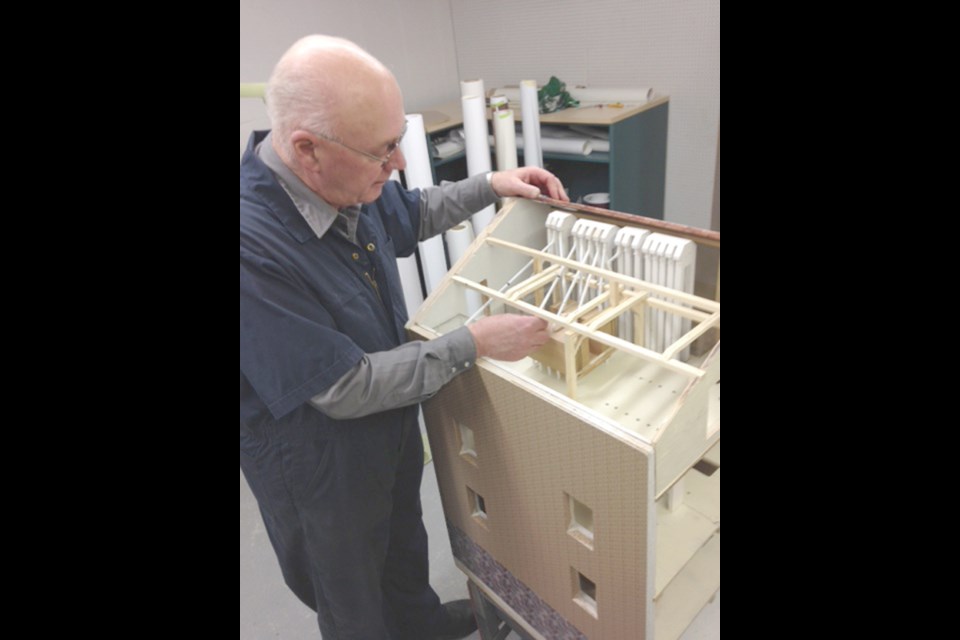Before there was a flour mill in Yorkton there was a brick-making company — and so it was that just around the turn of the twentieth century, the factory owner used his company to build a brick structure — the structure known for decades simply as the old brick mill. Efforts to reclaim and restore that building relate to the early European settlement of the Yorkton area and the founding of the City of Yorkton.
And so it is that a former Yorkton school girl comes back to this city to relate how the history of the mill and the city intertwine. Nancy Morrison is a now a retired B.C. supreme court judge (who lived most of her professional life in British Columbia) and whom, every summer, is tugged back to her home district — or more precisely — Crystal Lake, just north of Canora.
On September 20th she is a featured speaker at a fund raising dinner and evening in support of the Yorkton Brick Mill Heritage Society — whose mission it is to retain the historic mill as part of the city’s living history.
A couple of Ms. Morrison’s great uncles were among the early York colonists who came to what we now refer to as ‘the parklands’ of Saskatchewan.
It is not clear if the Hopkins brothers actually fit the description as “remittance men” (the curious may Google) — but it seems that they did require funds from ‘the old country’ after emigrating from England in the mid 19th century. Nancy Morrison says they likely named a small lake, located on their homestead on the west side of current-day Yorkton, as ‘Hopkins Lake’, after their grandfather. He may have been the patron who sponsored their overseas venture, since their own father had died young, leaving a wife and four children.
The two oldest Hopkins brothers were 19 and 21 at the time, Ms. Morrison confirms, “clerking for a railway firm in London.” There were two other Hopkins siblings who came later.
“They did not look like what you and I might think of as robust settlers. Very short and slender young men.” Morrison relates.
Their motivation — to own land. Their readiness to face the realities of the homesteader — ‘they were not prepared’.
Ms. Morrison refers to ‘stunning work’ by Yorkton’s heritage researcher Terri Lefebvre Prince for digging up and fleshing out many of the details about the early settlements.
According to that research, the two older Hopkins brothers, Ted and William were among a group of colonists wintering here in 1882 — but running out of supplies, they trekked the 50 or so miles to Fort Ellis (St.Lazarre, Manitoba today) to ‘shop’ for their needs. Apparently, they did now know yet about Fort Pelly to the north east or Fort Qu’Àppelle (closer) to the south west.
Having come without even “proper underwear” for Canadian prairie winters, “they were learning fast I suspect”.(Morrison notes as well that the European settlers gained and learned much from the aboriginal neighbours of what was then the North West Territories.)
Eventually their brother Roland and their younger sister Jesse would emigrate to the York Colony as well.
Jesse Ellen Hopkins was destined to marry another young British immigrant, Henry Christopherson, (who came in 1888). They were Nancy Morrison’s grandparents.
Morrison says the research shows that likely all were in that “remittance” category. “They must have had some financial help from their families in England. “Henry Hopkins had purchased horses and cows, making him a ‘rancher’ of the day.”
“But they weren’t really ranchers or farmers,” Morrison states, Ì think their contribution was more as administrators. Both William and Henry Christopherson became magistrates in the eventual town of Yorkton. At the turn of the century Henry was the local sheriff.”
Important and central to the story of settlement. Morrison says, was the regard and need for the North West Mounted Police — that in the face of potential encroachment from the neighbouring US ‘wild west’.
The Yorkton Enterprise “social columns” of about 1900 reveal a reference from Henry Christopherson that he was giving up ranching in favour of “land conveyancing” mortgages and real estate.
“There’s no question that they were better businessmen and entrepreneurs than ranchers and farmers.”
Nancy Morrison’s mother Jesse was among seven children of the Christophersons. Nancy relied heavily on stories passed on from her mother to begin her research and accounts of Yorkton’s early history.
“At first I thought she might have been exaggerating but the more research I did and the more documents I got… I realized she was a very good and accurate historian.”
While the naming of the lake after their grandfather Hopkins, the brothers likely helped their flow of money from home in the UK, but Nancy Morrison believes these young and “new” Canadians meant to honour their grandfather with the naming of the Lake — a lake which became a favourite local swimming hole and which eventually would become a park known as “Jaycee Beach.”
Tickets to the fund raiser banquet for Yorkton’s Brick Mill Heritage Society September 20th, at St. Gerard’s Hall are available at Park’s Jewellery in Yorkton or from HeritageSociety members.
—submitted by Jack Dawes for the Yorkton Brick Mill Heritage Society, compiled from a radio broadcast on The Rock 98.5 FM.




